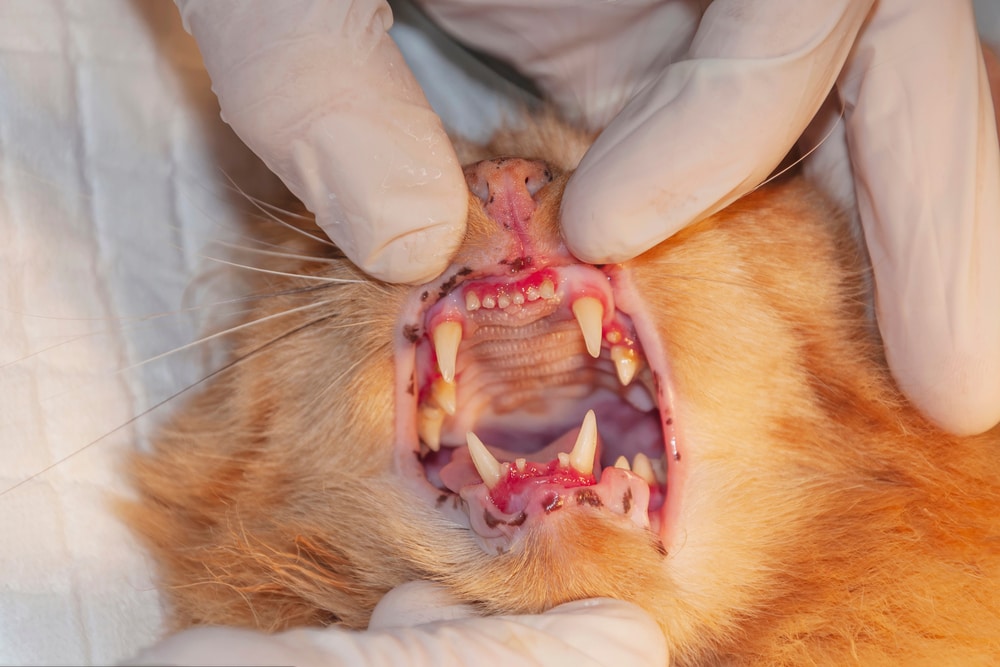Distemper Vaccine for Cats: A Complete Guide (Vet Answer)
By Dr. Paola Cuevas, MVZ (Vet)
Updated on
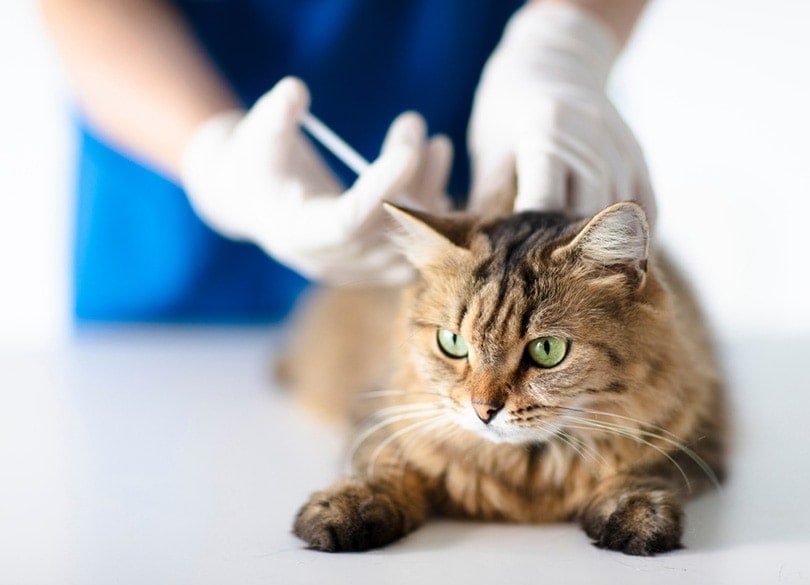
Click to Skip Ahead
Distemper disease in cats, also known as feline panleukopenia (FLP), is caused by a very contagious and resilient virus of the Parvovirus family. The distemper vaccine is classified as a core vaccination, i.e., a vaccine that is considered essential for every cat to receive.
The distemper vaccine is available as a combination vaccine for cats, meaning it protects against more than one virus. Nearly all vets will suggest your new kitten get the FVRCP vaccine, which protects against feline herpes virus-1, feline calicivirus, and feline panleukopenia virus. This ensures your cat receives protection against three serious and common viral diseases in one same shot.
In this article, we will discuss specifically the feline distemper virus and the different kinds of vaccines and schedules suggested to protect your kitty. We’ll also touch on the potential side effects and average costs of this vaccine.
Feline Distemper Virus
This virus can affect the digestive, immune, and nervous systems of all felines and several other animals belonging to the Carnivora order including raccoons, ferrets, and minks. infects rapidly dividing cells of the body, especially the cells of the intestine, bone marrow, lymphoid tissue, and nervous tissue of fetuses developing inside the womb.
- Feline infectious enteritis
- Feline panleukopenia
- Feline parvovirus
Clinical Signs
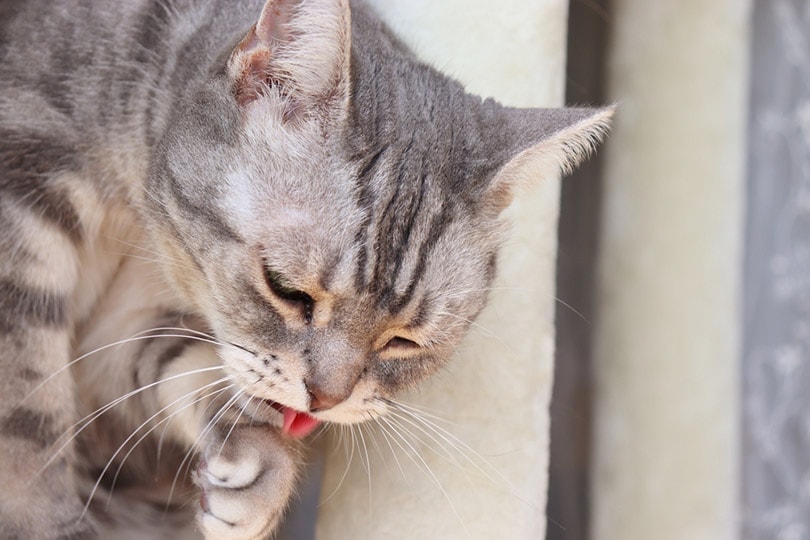
The word “panleukopenia” literally means a decrease of all white blood cells in the blood. This virus attacks the bone marrow and lymphoid tissue of cats, where white blood cell precursors originate. Because white blood cells are the main component of our immunity, a cat with no white blood cells is very vulnerable to many other secondary infections.
The virus also infects the gastrointestinal tract, causing profuse diarrhea and vomiting. The virus replicates in the mucosal cells of the intestines, causing gastrointestinal ulcerations, which can result in bloody diarrhea. This can not only be alarming to you as a cat parent, but it can cause severe dehydration and a dull and dry coat in your cat. It can also cause fever and eye and nose discharge as a result of secondary infections.
The virus can pass to the fetuses, causing embryonic reabsorption, fetal mummification, abortions, and stillborn kittens. If the virus infects the fetuses during their last few weeks in the womb or shortly after being born, kittens might develop cerebellar ataxia and may be unable to coordinate their movements. The mortality rate in kittens is up to 90%.
Transmission
A sick animal sheds the virus in all body fluids, the feces, urine, saliva, mucus, and vomit. Infected animals are believed to start shedding the virus 3 days before showing clinical signs, and some continue shedding even after recovery.
The transmission occurs when an animal comes in direct contact with an infected cat, or by contact with polluted objects such as beddings, dishes, water, or walls. Fleas and other insects can also be mechanical vectors and transmit the virus. Indoor cats have been infected through viruses carried in humans’ clothes. This virus is tough to beat because it can survive for up to a year in the environment.
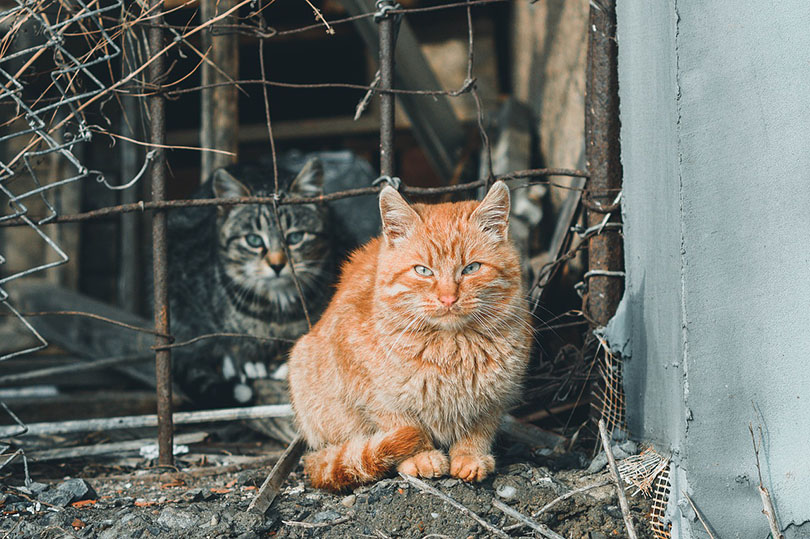
Distribution
This virus can be found anywhere in the world in virtually any environment that is not regularly disinfected. This virus is very resilient and resistant to several disinfectants but can be killed with a solution of chlorine and water.
Prevention
Vaccination is the only effective way to prevent this virus transmission. Feline distemper is considered the most important component of the combination vaccine called FVRCP.
- Feline viral rhinotracheitis (feline herpes virus-1)
- Feline calicivirus
- Feline panleukopenia (distemper virus)
3 Types of Vaccines Available
1. Inactivated Virus Vaccine
Inactivated or killed vaccines create a weak immune response and require repeated, periodic revaccination to create and sustain immunity. Some of these vaccines also contain an added component called an adjuvant that helps to create a stronger immune response.
2. Modified Live Vaccine
Modified live vaccines (also known as attenuated vaccines) are made with viruses that are still alive and can replicate inside the host but have been modified so that they cannot cause disease. The replication in the host mimics a natural infection but without the disease; creating a strong and durable immunity since the first application.
Modified live vaccines are considered very safe but should be avoided in immunocompromised patients and developing kittens so they should not be administered to pregnant queens or sick animals.
3. Hybrid Vaccines
Some modern combination vaccines are considered hybrid vaccines because they have different kinds of vaccines for each virus. For example, a live modified vaccine for distemper and herpes virus plus an inactivated vaccine against two different strains of calicivirus all in one shot. These kinds of vaccines are popular in shelters as they provide strong protection against distemper since the first shot.
Vaccine Presentations and Schedules
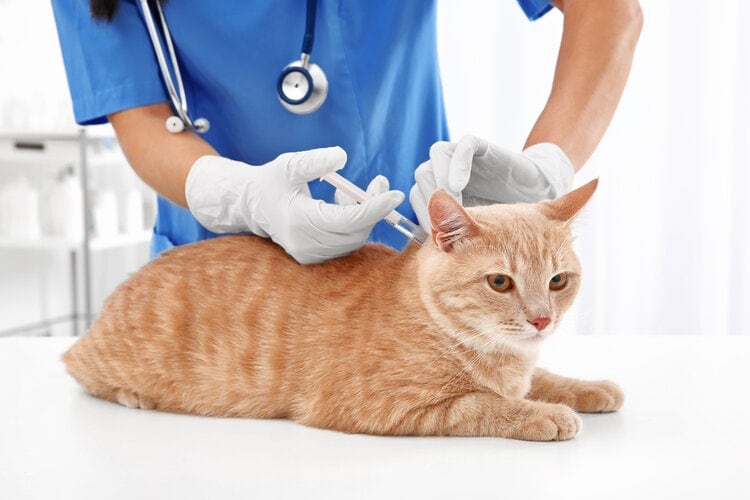
Vaccination has typically been provided via injection, but new products on the market can be administered through the nose. The typical vaccination schedule for kittens is to administer the first vaccine at 6-8 weeks of age. This should be followed by two booster shots in 3-4-week intervals. That means the dose of the second vaccine is applied between 1–12 weeks of age and the third between 14 and 16 weeks of age. By the time they reach 18 weeks of age, all kittens should have received the three first doses. A fourth booster shot can be applied after the first year and then every 3 years after that.
In shelter conditions, however, where the risk of infection is higher, kittens receive the first vaccination at 4 weeks of age and continue biweekly boosters intervals until they reach the age of 18 weeks.
Cost of Vaccines
The cost of the FVRCP vaccine depends on the country, the kind of vaccine, and the brand of the vaccine. In the USA the cheaper FVRCP vaccines average price is $15 at a low-cost vaccine facility but vaccines applied at private veterinary clinics can reach a price of around $60.
Vaccinations are important to keep your pet happy and healthy but some of them can be very costly, especially if you have more than one pet. A customized pet insurance plan from Spot may be able to help you manage your pet's vaccination and healthcare costs.
Secondary Effects of The Vaccine

Modern vaccines are very safe and adverse effects are rare. After vaccination, the cat might not be very interested in food, might be a little low, and even develop a low-grade fever and slight swelling at the vaccine application site. These signs will disappear in a couple of days.
Some cats can be allergic to components of the vaccine and allergy signs such as hives, red or swollen eyelids and lips, and itchiness can appear after vaccine application.
Anaphylactic reactions to the vaccine are very rare but are also a possibility. These are medical emergencies due to respiratory distress, which also present with vomiting, diarrhea, facial swelling, itchiness, and collapse.
If your cat presents any sign of adverse reaction or vaccine complication, inform the veterinarian for advice and next steps. If your cat is having trouble breathing, please do not hesitate and take them back to the vet straight away as this is an emergency. Also,
If the injection site still looks swollen after a couple of weeks it should be evaluated by the veterinarian.
If 3 or more months after receiving a vaccine, you notice the cat developed a lump under the skin at the site of injection, please inform the vet. Some cats are genetically predisposed to develop a cancerous tumor that seems to be triggered by the adjuvant components of certain vaccines—but this is a rare condition.
The incidence of vaccine complications is low, so the benefits of vaccination greatly outweigh any potential risk.
Conclusion
All cats should be protected against the feline distemper virus through vaccination. Most modern feline distemper vaccines are combined to protect against two other common feline viruses as well. Modern vaccines are very safe and adverse reactions are rare. Your veterinarian should be able to recommend the best vaccination protocol for your cat.
Featured Image Credit: Tom Wang, Shutterstock








